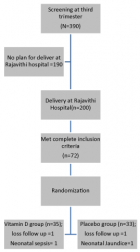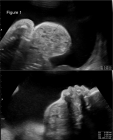Table of Contents
Influence of Vitamin E on the Disposition Kinetics of Florfenicol after single and multiple oral administrations in Broiler Chickens
Published on: 12th December, 2017
OCLC Number/Unique Identifier: 7317595688
Investigation the influences of vitamin (vit) E over a period of 5 days on the pharmacokinetics of florfenicol after single and multiple oral administrations in broiler chickens. Total of 12 broiler chickens had been taken single and multiple oral administrations of florfenicol (30 mg/kg) alone or pre-treated with vit E (2 mg/kg). The serum concentrations of florfenicol were determined using microbiological assay with Bacillus subtilis (ATCC 25922) as a tested microorganism. The mean serum concentrations of florfenicol alone were markedly lower when compared with florfenicol pre-treated with vit E after single and multiple dosing. The peak serum concentrations (Cmax) were 5.9±0.46, 7.48±0.3 ug/ml, absorption half-life (t0.5ab) of 0.51±0.06, 0.71±0.1 h and elimination half-life (t0.5el) of 2.72±0.34, 3.34±0.5 after single florfenicol alone and florfenicol pre-treated with vit E respectively. While, after multiple dosing, (Cmax) were 7.4±0.3, 8.04±0.3 ug/ml, (t0.5ab) 0.82±0.04, 0.81±0.04 h and (t0.5 el) 3.77±0.2, 4.52±0.7 h after multiple dosing of florfenicol alone and florfenicol pre-treated with vit E respectively. In conclusion Vit E alter the disposition kinetics of florfenicol after single and multiple oral administrations as, vit E allows prolongation of the duration of action for more 24 and 48 h of the drug concentration in the serum indicated by prolonged elimination half-lives and MRT reflecting the importance of this combination for the drug duration in serum but the increase in the serum concentration of florfenicol increasing its efficacy not toxicity as florfenicol of wide safety margin so, it’s advisable for poultry farms owners to use this combinations.
Ocular surface Rose Bengal staining in normal dogs and dogs with Keratoconjunctivitis Sicca: Preliminary findings
Published on: 30th October, 2017
OCLC Number/Unique Identifier: 7325075478
Dry eye or keratoconjunctivitis sicca, is commonly seen in the dog. Veterinary ophthalmologists diagnose this aqueous tear deficiency using the Schirmer tear test (STT), but this measures tear production and does not indicate ocular surface pathology. The vital dye Rose Bengal is commonly used in the diagnosis of dry eye in human patients but until now has not been reported in veterinary patients. Here we corelate the degree of Rose Bengal staining with the STT value and find a reasonable association between dye staining of the ocular surface and tear production, although clearly other factors are also important in the genesis of ocular surface damage in dry eye.
Efficacies of 11% Lactoferricin and 0.05% Chlorhexidine Otological Solution compared, in the treatment of microbial otic overgrowth: A randomized single blinded study
Published on: 4th October, 2017
OCLC Number/Unique Identifier: 7325011971
Background:Topical therapy with antimicrobial agents is used in otitis treatment. Due to increase of antibiotic resistance, new strategies are needed. Antiseptics are used but they may induce contact dermatitis. Natural antimicrobial peptides may represent future effective drugs.
Objectives:The objectives were to test the efficacy of an 11% lactoferricin otological solution (LCF) in bacterial and yeasts otic overgrowth and compare LCF with a commercial one containing chlorhexidine (CLX) 0.05%.
Materials and methods:Forty-one dogs diagnosed with bacterial or yeasts otitis overgrowths were included according to general good practice. They were randomly assigned to lactoferricin or chlorhexidine group for treatment. Otological solution were applied twice a day for a week and then daily for another week. Clinical and cytological score was assessed at day 1 and day 14. At the end of the study, the owners had to express an opinion on the overall efficacy of the products. Statistical analyses were performed using Wilkoxon’s test and T test for paired samples. Results in lesional and cytological score were significative with a p<0.05.
Results:Forty dogs completed the study. All cases, receiving lactoferricin or chlorhexidine, were successfully treated with clinical signs remission and regression of infection (p<0.05). The owners’ judgment was good in 87%, mild in 13% for LCF group. For CLX they scored good in 41%, mild in 24% and unuseful in 35% of cases.
Conclusions:Lactoferricin, an antimicrobial natural peptide, showed the same efficacy of chlorhexidine in the treatment of otitis characterized by bacterial or/and yeast overgrowth.
Mechanism-related Teratogenic, Hormone Modulant and other Toxicological effects of Veterinary and agricultural surfactants
Published on: 18th September, 2017
OCLC Number/Unique Identifier: 7325078577
Veterinary and agricultural surfactants are supposed to be inert additives, yet these substances commonly exert biological side-effects, in given cases synergistic with those of the active ingredients of these preparations. This is explicitly seen in altered toxicity of veterinary or pesticide formulations compared to their active ingredients alone. Neither the individual effects of these excipients, nor such combination effects are well-studied in toxicology, and therefore, possible toxicity consequences are occasionally not being considered at sufficient significance in the authorization, use and control of these substances. Risk assessment of these substances should cover all hazards they may represent, and corresponding levels of exposure. Surfactants used in veterinary and pesticide formulation enter the environment either by direct dispersion or by indirect release through excrement, leaching, sewage waters or sludge, and in turn, create potential exposure to a number of non-target organisms. Biochemical and (eco)toxicological hazards recently identified regarding certain agricultural surfactants include cytotoxicity (on cell lines of epithelial, neural and other tissues, as well as stem cells and tumor cells), endocrine disrupting effects, as well as aquatic ecotoxicity. This Mini Review summarizes toxicological effects identified in our studies in aquatic toxicity tests, in cell viability and cytotoxicity tests, in estrogenic activity assays, correlated with biochemical analysis of the surfactants and their decomposition. The conclusions are hoped to facilitate environmentally precautious revision of surfactants widely used in agriculture.
Investigation on Theileria lestoquardi infection among sheep and goats in Nyala, South Darfur State, Sudan
Published on: 6th September, 2017
OCLC Number/Unique Identifier: 7325431938
This study was conducted in Nyala, South Darfur State, Sudan during August-September 2015 to study the seroprevalence of ovine and caprine theileriosis and to identify the tick infesting sheep and goats. For this purpose, total of 150 samples (ticks, blood smear and sera) were collected from sheep (n=61) and goats (n=89) of different age groups, breed and both sex. Three age groups were included: less than one-year-old, one-two years-old and more than two-year-old. Two diagnostic techniques were used, blood smears, and indirect fluorescent antibody test (IFAT). Out of 150 samples, 9 (6%) were positive for Theileria spp. piroplasms in blood smears, and 81 (54%) were positive for Theileria lestoquardi antibodies. Out of 61 sheep, 3 (4.9%) were positive for Theileria spp. piroplasms, and 25 (41%) were positive for T. lestoquardi antibodies. Out of 89 goats, 6 (6.7%) were positive for Theileria spp. piroplasms, and 56 (62.9%) were positive for T. lestoquardi antibodies. The highest prevalence of T. lestoquardi was recorded among sheep and goats more than two-year-old. Two genera and 4 species of ticks were infested sheep and goats. These included Rhipicephalus evertsi evertsi, R. s. sanguineus, Amblyomma variegatum and A. lepidum. The study concluded that the malignant ovine theileriosis is endemic in Nyala town.
Exploring novel medical applications for commonly used veterinary drug (tilmicosin antibiotic)
Published on: 31st August, 2017
OCLC Number/Unique Identifier: 7325099093
Tilmicosin (TMC) is a semi synthetic macrolide antibiotic of tylosin derivatives commonly used by veterinaries, has been shown to reveal beneficial pharmacological activities. In the current study, the potential wound healing activity, Anti-oxidant effect (ulcer and hepatoprotective) were investigated. Anti-inflammatory, antipyretic, analgesic (central and peripheral), hypnotic and antispasmodic activity were also screened. This study included adult both sexes of rats (200-250 gm), mice (20-25 gm) and adult rabbits. Experimental wound was induced on the anterior-dorsal side of each rat whereas, ulcer induced by ethanol causing mucosal damage in rats. The oral anti-inflammatory induced through formalin producing edema, antipyretic (Brewer’s yeast induced hyperthermia) and analgesic (writhing test, hot plate method, tail immersion method) while hypnotic effects induced through thiopental sodium. Anti-spasmodic effect on isolated organs (intestinal and uterine muscles) using new method of Modular Single Chamber Organ Bath were carried out on experimental animals. Tilmicosin antibiotic at different two doses of 20 and 40 mg/kg b.wt., has an important role in treatment of ulcer (cytoprotective effect) and improvement the wound healing processes besides anti-inflammatory, analgesics, and anti-pyretic effects. Tilmicosin revealed also hypnotic and intestinal anti-spasmodic effects but showed Pharmacovigilence hepatotoxic effect through the histopathological studies which revealed sever hepatic damage especially at larger dose.

If you are already a member of our network and need to keep track of any developments regarding a question you have already submitted, click "take me to my Query."


















































































































































